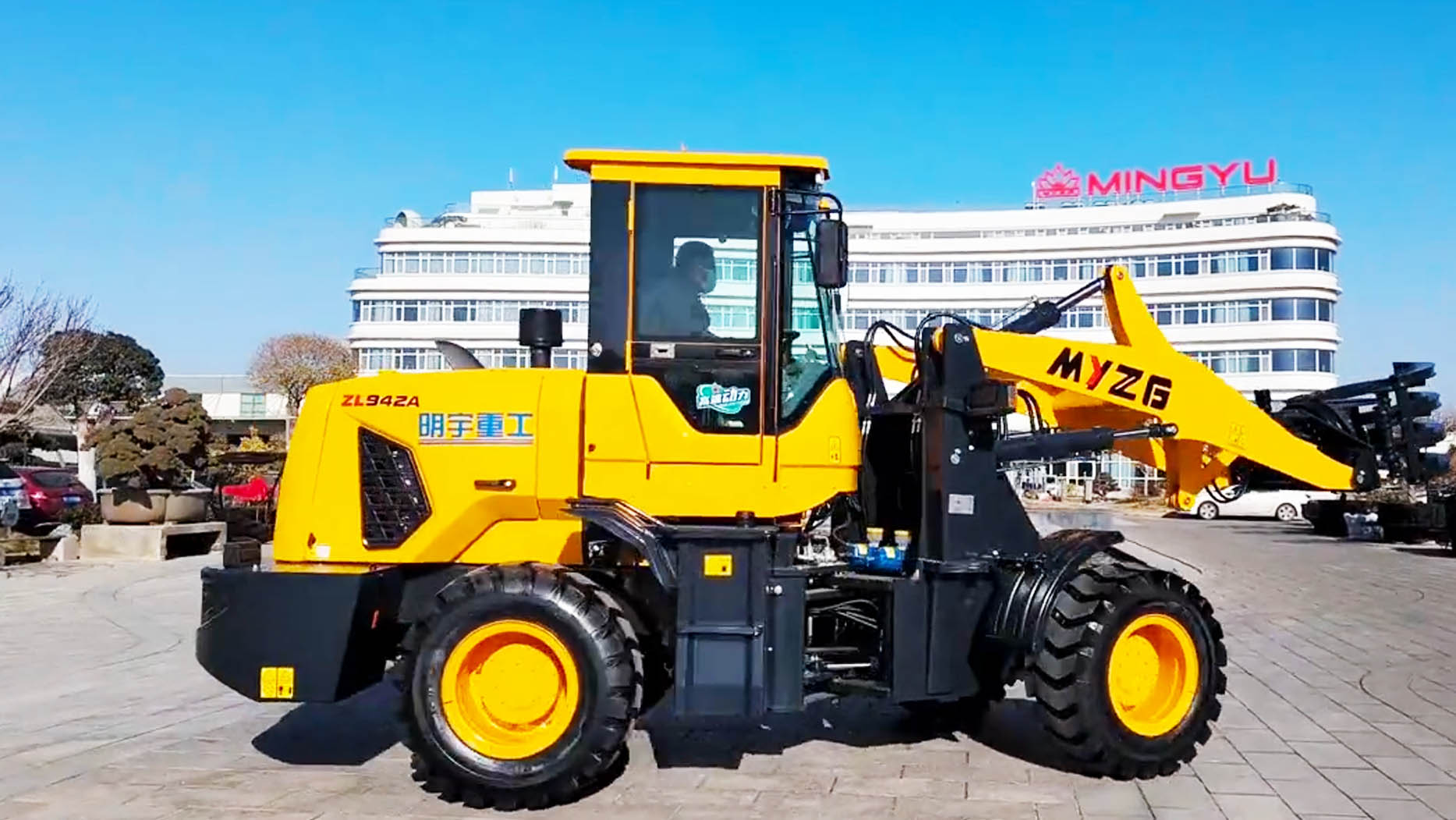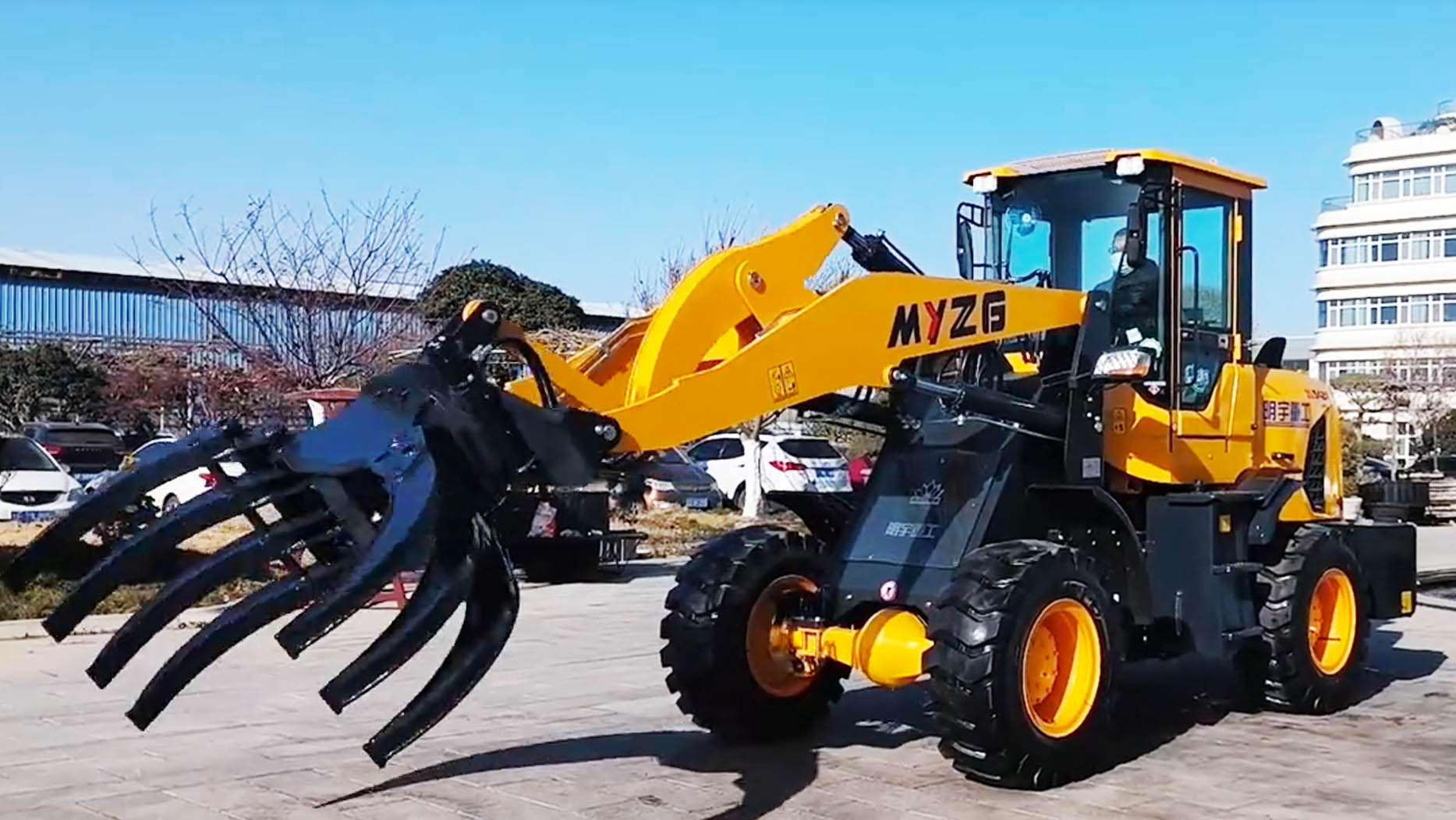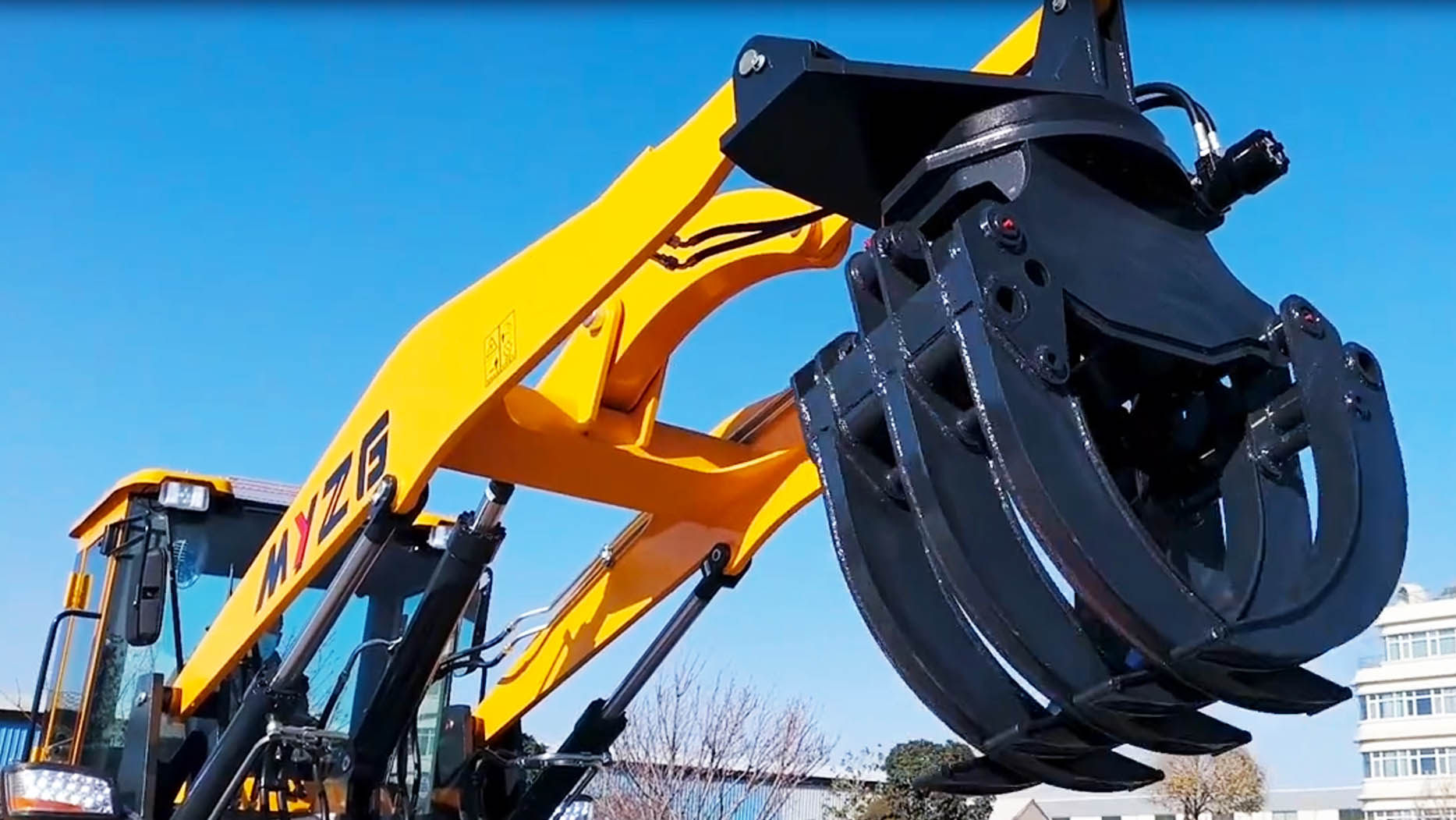A wheel loader, a workhorse of construction and material handling, relies on a robust hydraulic steering system to maneuver effectively. When a loader abruptly loses the ability to steer left, only turning right, it signals a critical failure demanding immediate attention. This article will delve into the potential causes of this unilateral steering issue, exploring the hydraulic circuitry, mechanical linkages, and electronic controls that could be at fault.
Understanding the Wheel Loader Steering System
Before diagnosing the problem, it's crucial to understand the typical hydraulic steering system found in most modern wheel loaders. This system generally comprises:
Hydraulic Pump: Provides the necessary fluid flow and pressure.
Steering Control Unit (SCU) or Orbitrol Valve: Directs hydraulic fluid to the steering cylinders based on steering wheel input.
Steering Cylinders: Double-acting cylinders that pivot the loader's frame for steering.
Hydraulic Lines and Hoses: Transport fluid throughout the system.
Relief Valves: Protect the system from overpressure.
Priority Valve: Ensures the steering system receives priority oil flow over other hydraulic functions.
Accumulators (in some systems): Store pressurized fluid for emergency steering.
Electronic Control Units (ECUs) and Sensors (in electronically controlled systems): Monitor and regulate steering performance.
Mechanical Linkages: Connect the steering cylinders to the loader's frame.
Potential Causes of Right-Turn-Only Steering
The inability to steer left points to a disruption in the hydraulic flow or mechanical movement necessary for that direction. Here are the most likely culprits:
1. Steering Control Unit (SCU) or Orbitrol Valve Malfunction:
Internal Blockage/Damage: The SCU contains intricate spool valves that direct fluid flow. Debris, contamination, or internal damage can obstruct the left-turn passage, preventing fluid from reaching the corresponding cylinder chamber.
Stuck Spool: A spool valve may become stuck in a position that only allows right-turn flow. This can be caused by wear, corrosion, or contamination.
Seal Failure: Internal seal failures within the SCU can result in leakage, preventing the buildup of sufficient pressure for left turns.
2. Steering Cylinder Issues:
Internal Leakage: A seal failure within the left-turn side of the steering cylinder can cause fluid to bypass the piston, preventing it from extending and turning the loader left.
Bent or Damaged Cylinder Rod: A bent or damaged cylinder rod can restrict movement, preventing the cylinder from extending or retracting properly.

Mechanical Binding: External debris or damage to the cylinder's mounting points can cause mechanical binding, preventing the cylinder from moving.
3. Hydraulic Line and Hose Problems:
Collapsed or Blocked Hose: A collapsed or internally blocked hose on the left-turn side of the cylinder can restrict or prevent fluid flow.
Damaged or Leaking Line: A damaged or leaking line can result in pressure loss, preventing the cylinder from receiving sufficient fluid.
Restricted Flow: Kinks, twists, or internal debris in the hydraulic lines can restrict flow.
4. Hydraulic Pump and Pressure Issues:
Pump Failure: While a complete pump failure would likely affect all hydraulic functions, a partial failure could result in insufficient pressure for left turns.
Relief Valve Issues: A stuck or faulty relief valve on the left-turn side of the system could prematurely relieve pressure, preventing the cylinder from moving.
Priority Valve Malfunction: The priority valve ensures that the steering system receives adequate oil flow. A malfunction could lead to insufficient flow for left turns.
5. Electronic Control System (If Applicable):
Sensor Failure: In electronically controlled systems, sensors monitor steering wheel position and cylinder movement. A faulty sensor can provide incorrect data to the ECU, preventing left turns.
ECU Malfunction: The ECU processes sensor data and controls the hydraulic valves. A malfunction in the ECU could result in incorrect commands, preventing left turns.
Wiring Issues: Damaged or loose wiring to sensors or valves can disrupt communication and cause steering problems.
Software Glitches: Software issues within the ECU could cause incorrect valve activation.
6. Mechanical Linkage Problems:
Broken or Bent Linkage: Damaged or bent linkages between the steering cylinders and the loader's frame can restrict or prevent movement.
Loose or Worn Joints: Loose or worn joints in the linkage can introduce play and prevent precise steering.
Binding or Obstruction: External debris or damage can cause binding or obstruction in the linkage, preventing left turns.
Diagnostic Procedures
To pinpoint the exact cause of the problem, a systematic diagnostic approach is essential:
Visual Inspection:
Check for obvious damage to hydraulic lines, cylinders, and linkages.
Inspect for leaks around the SCU, cylinders, and hoses.
Look for signs of mechanical binding or obstruction.
Hydraulic Pressure Testing:
Use pressure gauges to measure hydraulic pressure at various points in the steering system, including the pump, SCU, and cylinder ports.
Compare pressure readings to the manufacturer's specifications.
This helps to identify pressure losses or restrictions.
Flow Testing:
Measure the flow rate of hydraulic fluid to the steering cylinders.
This helps to identify restrictions in the lines or SCU.
SCU Testing:
If pressure and flow tests indicate a problem with the SCU, it may need to be disassembled and inspected for internal damage or wear.
Test the internal pressure of the SCU's ports when the steering wheel is turned to the left and to the right.
Cylinder Inspection:
Disassemble the steering cylinders and inspect for internal damage, seal failures, and rod damage.
Check for excessive play.
Electronic Diagnostics (If Applicable):
Use diagnostic tools to check for error codes from the ECU.
Verify sensor readings and actuator functionality.
Check wiring continuity.
Linkage Inspection:
Closely inspect all linkage connections, and check for excessive play.
Manually attempt to move the linkages to check for binding.
Repair and Maintenance
Once the problem is identified, appropriate repairs should be performed. This may involve:
Replacing damaged hoses, lines, or cylinders.
Overhauling or replacing the SCU.
Repairing or replacing damaged linkages.
Replacing faulty sensors or ECUs.
Flushing the hydraulic system and replacing contaminated fluid.
Ensure that any replacement parts meet the OEM specifications.
Preventive Measures
To minimize the risk of steering system failures, regular maintenance is crucial:
Regularly inspect hydraulic lines, hoses, and cylinders for damage or leaks.
Maintain proper hydraulic fluid levels and cleanliness.
Follow the manufacturer's recommended maintenance schedule.
Train operators to avoid excessive steering wheel movement and overloading the steering system.
Regularly check the mechanical linkages for wear.
By understanding the complexity of the wheel loader's steering system and following a thorough diagnostic process, technicians can effectively identify and resolve the issue of right-turn-only steering, ensuring the machine's safe and efficient operation.
Post time:Feb.21.2025


